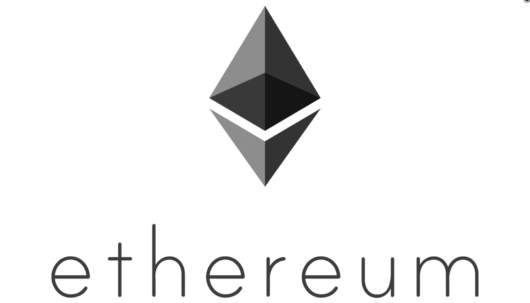Ripple and Ethereum are two of the most popular digital assets in the crypto market. Despite both cryptocurrencies promising to reinvent finance across the globe, ETH and XRP tackle this monumental task from completely different angles.
While David Schwartz, Brad Garlinghouse, and the team at Ripple Labs want to facilitate simpler transactions globally, Vitalik Buterin and the wider Ethereum community are reimagining what’s possible on the internet.
In this article, we’ll pit two of the blockchain industry’s brightest stars against each other to see who comes out on top.
Table of Contents
- Ripple vs. Ethereum: At a Glance
- What Is Ripple (XRP)?
- What Is Ethereum (ETH)?
- Key Differences Between Ripple and Ethereum
- Use Cases
- Scalability
- Vision
- Looking to the Future
- What’s Next for Ripple?
- What’s Next for Ethereum?
- Final Verdict
- On the Flipside
- Why This Matters
- FAQs
Ripple vs. Ethereum: At a Glance
Before plunging into the nuts and bolts of these protocols, it’s important to understand what Ripple and Ethereum do and why these ecosystems carry so much gravity in the crypto space.
What Is Ripple (XRP)?
 Source: Ripple
Source: Ripple
Originally designed by Jed McCaleb as the ultimate Bitcoin (BTC) alternative, Ripple is a cross-border payment protocol that aims to streamline international financial transactions.
With a focus on central banks and other high-powered financial institutions, Ripple Labs envisions a world where lengthy and expensive international payments are executed in seconds, liberating the flow of money worldwide.
The Ripple Labs team has wasted no time building a powerful network of strategic partnerships. Dozens of banks and financial institutions, including Santander and the Commonwealth Bank of Australia, have joined the RippleNet. With XRP’s legal dramas mostly behind it, Ripple’s expansive partnerships are expected to grow.
Strengths
- Affordable – A transaction on the XRP Ledger costs an average of $0.0002, making the network more affordable than existing cross-border payment platforms.
- Fast – While current international payment solutions, like SWIFT, can take days to clear, XRPL payments are settled in as little as 3 seconds.
- Sustainable – XRPL transactions are roughly 61,000 times more energy efficient than proof-of-work blockchains like Bitcoin.
What Is Ethereum (ETH)?


Ethereum is the second-largest cryptocurrency by market capitalization and is responsible for pioneering many of blockchain technology’s greatest innovations.
A fully decentralized, smart contract-capable network, Ethereum reimagined what we knew possible on the internet, giving us remarkable new use cases like decentralized finance (DeFi) and non-fungible tokens (NFTs).
Today, Ethereum boasts the greatest diversity of on-chain technologies and applications seen in the space. Vitalik Buterin’s network has given millions of people worldwide greater control over their funds, eliminating the need for costly intermediaries in dozens of industries and sectors.
Strengths
- The Original Layer One – Ethereum was the first blockchain to support smart contract development, allowing for a virtually endless range of potential use cases.
- Immense TVL and Activity – Ethereum boasts greater TVL (Total Value Locked) and activity than all other blockchains, implying that it’s the most commonly used and trusted network in crypto.
- Central Hub of Crypto Innovation – Ethereum offers developers greater flexibility and composability than any other chain, making it the first choice for developers and entrepreneurs looking to test revolutionary new ideas.
Key Differences Between Ripple and Ethereum
As I’m sure you can understand by now, Ripple and Ethereum are fundamentally different on many levels, and each blockchain is better suited to different tasks. What are the main differences to consider when comparing the two blockchains?
Use Cases
Ripple, XRP, and the XRP Ledger are primarily used to transfer funds efficiently across borders. That’s not to say there isn’t some semblance of DeFi activity on the network, but the blockchain’s main focus is to provide services to financial institutions globally.
On the other hand, Ethereum offers a far more diverse range of utilities. While early activity on the network was centered around decentralized finance, Ethereum developers have spread their wings to provide blockchain-based applications in everything from supply chain management and healthcare to legal services and gaming.
Scalability
The XRP Ledger was designed to eclipse Bitcoin’s limitations and provide an unrivaled payment system. With blazing-fast transaction speeds, high transaction throughput, and low fees, the XPRL can support vast amounts of users without breaking a sweat or breaking the bank.


In this respect, Ethereum falls short. The network has long suffered from astronomical gas fees, with a simple trade, digital currency transfer, or NFT mint costing upwards of $50. Ethereum is also much slower than Ripple, managing only around 15 transactions per second
However, all is not lost for Ethereum. The network supports dozens of layer 2 scaling solutions that help shoulder some of the burden, providing Ethereum’s unmatched developer experience on far more scalable platforms.
On top of that, Vitalik Buterin and the Ethereum community are constantly working to improve the network. Plans are underway to alleviate Ethereum’s issues and help it compete with more modern and performant Layer Ones.
Vision
As mentioned earlier, Ripple’s primary focus is on delivering solutions for some of the world’s largest financial institutions. While most cryptocurrency industry aims to give power and control back to the individual, Ripple is more interested in sticking with the big players.
Beyond that, Ripple faces some centralization issues. While claiming to be fully decentralized, the XRP Ledger is largely operated by Ripple Labs, a private company.
As if that wasn’t enough, Ripple Labs holds over 50B XRP tokens in its escrow vaults.
I'm still not sure the escrow was such a good idea. I initially oposed it. Later weakly supported it. And today, I'm right on the fence.
— David "JoelKatz" Schwartz (@JoelKatz) January 8, 2024
This staggering figure makes up more than half of XRP’s total supply, a concept that even Ripple CTO David Schwartz has difficulty supporting.
Meanwhile, Ethereum’s development and future are firmly held in the hands of its community. On-chain votes manage the protocol’s governance, and anyone can submit new proposals that might dictate the blockchain’s path forward.
Like Bitcoin itself, Ethereum champions the original ethos of blockchain technology. The network aims to give everyone on earth greater control of their assets and provide a secure, anonymous, and permissionless platform for all.
Looking to the Future
Having shaken the legal monkey off its back, Ripple can finally look ahead unburdened. At the same time, Ethereum’s network effect is growing larger daily, supported by a comprehensive roadmap expected to resolve its issues. What does the future hold for these iconic cryptocurrencies?
What’s Next for Ripple?
While Ripple Labs’ legal battle with the U.S. Securities and Exchanges Commission is far from over, Judge Analisa Torres’ declaration that XRP is not a security has been a great boon for the XRP community.
With that out of the way, Ripple Labs can focus more on expanding the RippleNet work towards more partnerships with large financial institutions.
Rumors have been circulating about a potential Ripple IPO. However, Ripple Labs CEO Brad Garlinghouse has denied these claims, suggesting that Ripple is ‘not in any hurry’ to go public.
What’s Next for Ethereum?
Following a successful transition to becoming a more energy-efficient, Proof-of-Stake blockchain in 2022, the next steps of Ethereum’s roadmap are dedicated to scaling the network.
Co-founder Vitalik Buterin has updated the Ethereum roadmap, painting a picture of what to expect in 2024 (ignoring the typo in his post). The plan ahead follows the 6-step path to newfound scalability, separated into comically named sections.
By popular demand, an updated roadmap diagram for 2023! pic.twitter.com/oxo58A2KuG
— vitalik.eth (@VitalikButerin) December 30, 2023
While it is unlikely that all this will be achieved in 2024 alone, the Ethereum community is largely happy with the proposal, which aims to bring Ethereum to greater heights.
Final Verdict
Comparisons between crypto projects are not always a great measure of their value. The reality is that it’s hard to compare the perks and potential of two fundamentally different protocols with contrasting values and use cases.
On paper, Ripple is a far more efficient and scalable payment processor. However, Ethereum’s adaptability and scope are far wider, allowing for a more diverse range of utilities and adoption channels.
Ultimately, the question shouldn’t be as simple as ‘Which is better?’. The question is which blockchain is better suited to your individual needs.
Ripple is undoubtedly the better option if you want to transfer funds quickly at a low cost. For everything else, Ethereum offers a much more diverse range of tools and services that Ripple and the XRP Ledger cannot match.
On the Flipside
- Modern blockchains offer the best of both worlds. Newer, more performant blockchains like Solana can have faster transaction speeds and lower gas fees than the XRP Ledger while maintaining Ethereum-equivalent levels of smart contract composability.
Why This Matters
Ripple and Ethereum are two of the most important digital assets in the crypto market. It’s essential to understand what both networks are capable of before making any investment decisions.
FAQs
What’s better, Ripple or Ethereum?
Ripple and Ethereum serve different purposes and have different objectives. This makes it hard to say emphatically whether one is better.
Can Ripple XRP hit $100?
While nothing is impossible, it is exceptionally unlikely that Ripple XRP will hit $100. If this were to happen, XRP would have a market capitalization greater than that of Amazon and Apple combined.
Where can I buy Ripple and Ethereum?
You can buy Ripple (XRP) and Ethereum (ETH) on leading crypto exchanges like Binance and Coinbase.
Related articles


Ripple Accuses SEC of Significantly Mischaracterizing Facts


Ripple’s $15 Million XRP Case Closed in Amicable Settlement



